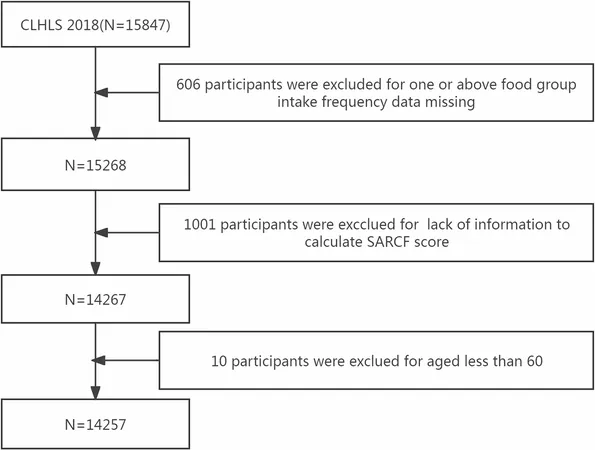
Unlocking the Secret: How Healthy Eating Can Combat Sarcopenia in the Elderly
2025-07-05
Author: Wei Ling
A Groundbreaking Study from China
In a pivotal investigation, researchers examined the crucial link between dietary quality and sarcopenia among Chinese seniors. Utilizing data from the China Longitudinal Healthy Longevity Survey (CLHLS), this study sheds light on how a robust healthy eating index (HEI) might serve as a powerful weapon against muscle loss in the aging population.
Understanding the Study Population
The CLHLS represents an extensive and ongoing effort to explore the factors that promote healthy longevity, incorporating a multistage sampling method across 22 provinces in China, encompassing approximately 85% of the national demographic. This study analyzed data from 14,257 participants aged 60 and above, ultimately uncovering significant trends related to diet and muscle health.
The Healthy Eating Index (HEI) Breakdown
The HEI assesses dietary quality based on the frequency of 13 food groups, including fruits, vegetables, meats, and dairy, collected through detailed interviews. Higher HEI scores reflect healthier eating habits, with totals ranging from 0 to 50. Notably, participants in the highest quartile of the HEI consumed significantly more fruits and vegetables compared to those in the lowest quartile.
Sarcopenia: A Hidden Danger for Seniors
Sarcopenia, characterized by progressive muscle loss and decreased physical function, affects an alarming 41% of older adults in the study. To assess this condition, researchers used the SARC-F questionnaire, a reliable screening tool specifically designed for seniors.
Crucial Findings: Diet Quality and Sarcopenia Risk
The results were telling: each unit increase in HEI correlated with a 4.4% decrease in the prevalence of sarcopenia. After adjusting for various demographic and health factors, this association persisted, revealing a clear trend: better diets lead to lower sarcopenia risk. Remarkably, participants aged 75 and above showed even stronger links between high HEI scores and lower risks of muscle loss.
Subgroup Insights: Who Benefits Most?
Subgroup analyses illuminated that individuals not living alone, as well as those who engaged in physical activities, enjoyed even greater protective benefits against sarcopenia linked to healthy eating. This suggests that social and lifestyle factors play vital roles in nutritional outcomes.
Key Takeaways: The Power of Nutrition
This groundbreaking study emphatically supports the notion that improving dietary quality through targeted interventions could significantly mitigate the risk of sarcopenia among older adults. With many seniors facing dire consequences from muscle loss, embracing healthier eating could be a game-changer.
Future Directions: Addressing the Gaps
Despite the significant findings, the study acknowledges limitations, such as the reliance on self-reported dietary data and the inherent challenges of observational research. Further studies are essential to confirm these associations and explore the effects of specific dietary patterns on sarcopenia across diverse populations.
Conclusion: A Call to Action
This research not only uncovers vital insights into the relationship between diet and muscle health in aging adults but also serves as a compelling call to action. Promoting better eating habits among the elderly isn't just a matter of preference—it could be a necessary step in preserving their strength and vitality.





 Brasil (PT)
Brasil (PT)
 Canada (EN)
Canada (EN)
 Chile (ES)
Chile (ES)
 Česko (CS)
Česko (CS)
 대한민국 (KO)
대한민국 (KO)
 España (ES)
España (ES)
 France (FR)
France (FR)
 Hong Kong (EN)
Hong Kong (EN)
 Italia (IT)
Italia (IT)
 日本 (JA)
日本 (JA)
 Magyarország (HU)
Magyarország (HU)
 Norge (NO)
Norge (NO)
 Polska (PL)
Polska (PL)
 Schweiz (DE)
Schweiz (DE)
 Singapore (EN)
Singapore (EN)
 Sverige (SV)
Sverige (SV)
 Suomi (FI)
Suomi (FI)
 Türkiye (TR)
Türkiye (TR)
 الإمارات العربية المتحدة (AR)
الإمارات العربية المتحدة (AR)